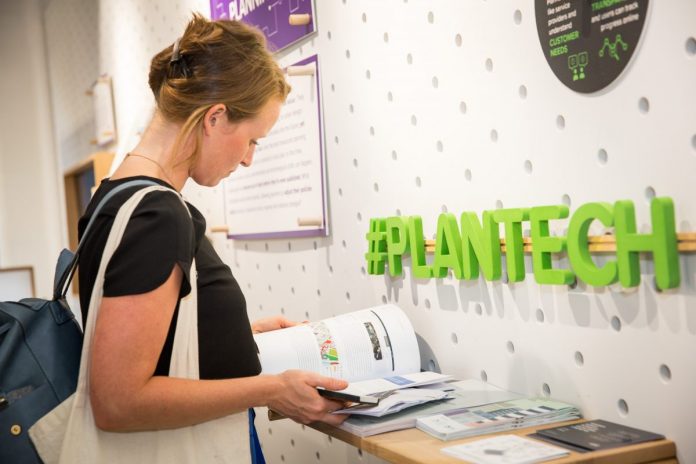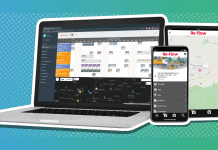Newly appointed Chief Executive Officer at Future Cities Catapult, Nicola Yates, talks to PBC Today about the dawn of the PlanTech era
In June 2017, Future Cities Catapult curated a series of events to celebrate the arrival of the PlanTech era – the revolution that’s exploring how digital innovation, urban data, and user-centred design can improve the UK planning system.
But truth be told, the revolution isn’t new. It’s been building for months, back to October when our Future of Planning programme began by asking the question “How could a more data-driven and digitally-enabled planning system benefit citizens, developers, planners and government?”
Frustrations with the current system aren’t limited solely to my organisation, or others that work in this field. Anyone, whether a business, employee or citizen, is likely to come into contact with the planning system, and I’ve no doubt you’ll know first or second hand, what the process can be like.
And that’s why we started this work. Because planning doesn’t have to be difficult. Because information doesn’t have to be hidden and complex. And because we shouldn’t be relying on a 19th-century system, built on 20th-century processes, to deliver 21st-century city solutions.
Unpicking these issues have taken time. Throughout our months of research, we worked to understand the problems and constraints faced by all involved in the planning system, from architects, developers, and city planners themselves. And from these discussions, there were two common themes that we kept running into; transparency and technology.
Barriers
On the first, complex language, outdated processes, and professional interests obscure the planning system to outsiders, keeping knowledge hidden, or at least privileged. In some cases, the problem comes down to something as simple as jargon – creating a barrier to all those who can’t speak in planning terms.
And on other occasions, information is simply locked away by those who control it. Much of the time, it’s because planning records are analogue – often in non-machine readable formats or even worse on paper, making them ill-suited to sharing.
Outdated technology
Which brings us to the second issue: the technology time trap in which the planning system finds itself. There’s no question that the way we plan is outdated and due an overhaul. Big data, artificial intelligence, and visualisation have transformed the way we process and interpret information, yet these types of digital interventions are seldom seen in the planning system.
That’s not to say there haven’t been early adopters. Virtual, mixed and augmented realities let us explore the impacts of development on our skylines or daylight hours, and agent-based modelling technology is allowing us to create complex models taking cultural trends into account, and modelling it all simultaneously.
In addition, sensors are being deployed to collect data on how people are using cities. The number of homes built and how they’re occupied, the extent to which streets are overcrowded, how often car parking spaces are being used, or the popularity of parks, can now be quantified and measured.
Data-driven and digitally enabled planning system
So, with this in mind we set a challenge for UK businesses, entrepreneurs and planning authorities, to develop proposals to create a more data-driven and digitally enabled planning system. The idea was to focus on how we plan, rather than what we plan for, and to create the critical space to experiment and demonstrate the potential of these technologies.
And as it turned out, we weren’t the only people hungry for change. 90 funding applications were received, nine of which were selected to develop prototypes that will help achieve a more transparent, inclusive and certain planning system.
Driving the PlanTech revolution
The results have been impressive. From an online tool that gives an instant indication of whether your application for an extension is likely to be successful, to a custom-made interface allowing planning officers to assess development proposals within a live 3D model of a city. These are just some of the many ideas that are driving the PlanTech revolution.
Critics may argue that by opening up the planning system to allow greater insight and access to more users, it will de-professionalise the planning profession. But they are forgetting that software and artificial intelligence will soon take over many of the lower-value activities in planning and surveying such as data collection and collation. Now is the moment at which planners can actively focus on the higher value, creative components of planning and placemaking before technology forces them to.
Only unscrupulous developers, politicians and planners have anything to fear over increasing transparency, technology and ultimately efficiency, in the planning sector. The rest will be able to enjoy a development ecosystem where standards rise because of increased competition and the public understands – and more readily accepts – development, because they’re aware of how it works. That is a future that we should not hide away from.
Future Cities Catapult is showcasing an interactive PlanTech exhibition throughout the summer, at their Urban Innovation Centre in Clerkenwell. ■
. . . . . . . . . . . . . . . . . . . . . . . . . . . . . . . . . . . . . . . . . . . . . . .
Nicola Yates
CEO
Future Cities Catapult
Tel: 020 7952 5111
www.futurecities.catapult.org.uk
Twitter: @futurecitiescat

















